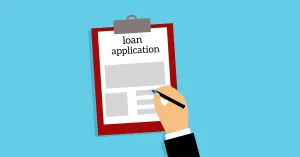MoneyThumb has many customers who use our best-selling products to help them handle their loan applications by allowing easy conversion of financial documents, whether it be as a lender or a borrower. Private and hard money lenders are among the top customers using PDF Insights to make quicker and better-informed lending decisions and most of the loans these types of lenders offer are Non-QM loans, (non-Qualified Mortgage.) Many private lenders offer Non-QM loans for those who have a complicated income history or major credit bumps in their past. This type of borrower finds it much harder to get approved for a qualified mortgage, or QM.
Non-QM loans aren't required to meet federal standards. Qualified mortgage loans have stringent rules to establish a borrower’s ability to repay a home loan, whereas non-QM loans have less stringent guidelines to get approved for a loan. Below the Rules of Thumb blog from MoneyThumb will help our readers understand Non-QM loans and who benefits from them. We will also cover the pros and cons of Non-QM loans vs QM loans.
What Is a Non-QM Loan?
Simply put, Non-QM loans don’t meet the requirements set by the Consumer Financial Protection Bureau (CFPB) to be considered qualified mortgages. That means they don’t satisfy one or more of the following requirements:
- The points and fees for loan amounts of $100,000 or more are less than or equal to 3%
- The loan cannot have risky features like negative amortization, interest-only payments or a balloon payment
- The term of the loan must be 30 years or less
- The debt-to-income (DTI) ratio must be 43% or less
One important note: Non-QM loans are not like subprime loans. Borrowers are still required to make a good-faith effort to verify they can repay the loan. However, non-QM lenders can create their own guidelines to prove you can afford the monthly mortgage payments.
Non-QM Underwriting Guidelines
There are no uniform underwriting standards for non-QM loans, but lenders usually choose specialized types of non-QM products. Interest rates and loan terms may vary widely from lender to lender. Data compiled by CoreLogic in 2019 found the following common credit characteristics of closed non-QM loans:
- The average credit score was 760
- The average down payment was 21%
- The average DTI ratio for non-QM homebuyers was higher in contrast to the DTI ratio for QM homebuyers
Moreover, CoreLogic’s analysis revealed the top three reasons borrowers choose a non-QM loan:
- More flexible documentation requirements
- More lenient DTI ratio limits
- Option to choose interest-only payments
Who Applies for Non-QM Loans?
A non-qualified mortgage may provide a temporary lending solution until you meet standard mortgage guidelines and can refinance to a traditional loan. Non-QM lenders mostly often offer loan options to the following types of people or organizations:
BORROWERS WHO WANT AN INTEREST-ONLY PAYMENT OPTION
If your income is sporadic, an interest-only loan gives you a lower payment option during times of the year when you earn less. Qualified mortgage rules prohibit them, and with good reason: Your payment could increase after the interest-only period ends, making the loan harder to repay.
BORROWERS WHO ARE SELF-EMPLOYED
Instead of tax returns, non-QM lenders offer bank statement mortgage loans. With 12 to 24 months’ worth of personal or business statements, the lender evaluates deposits to determine your qualifying income.
BORROWERS WITH HIGH NET-WORTH
Some lenders offer asset depletion programs. By dividing your total cash balance by a lender-chosen time period, the asset is counted as income. For example, a $200,000 savings balance may be converted into $833.33 of extra monthly qualifying income with a typical 20-year asset depletion loan term.
BORROWERS WITH RECENT BAD CREDIT
You may qualify for a non-QM loan one day after completing a bankruptcy or foreclosure. For standard loan programs, you typically need to wait two to seven years after a significant credit event.
BORROWERS WHO ARE FOREIGN NATIONALS
A foreign national is a citizen of another country who lives in the U.S. for brief periods for work or vacation. Non-QM loans for foreign nationals may not require proof of U.S. income, credit or a Social Security number.
BORROWERS INVESTING IN MULTIPLE RENTAL UNITS
Non-QM loans come in handy if you’re building a portfolio of investment properties but already own 10 mortgaged properties — the limit for most conventional lenders. Some lenders also offer debt-service coverage ratio loans for real estate investors. If the rent on the new home covers the monthly payment, you won’t need to verify any other income to qualify.
Where do I find non-QM lenders?
Because mortgage brokers usually work with a variety of different lenders, they’re often a valuable resource for finding non-QM loan products. However, interest rates and fees can vary. Contacting at least two or three mortgage brokers to review cost estimates should give you a good baseline for whether you’re getting a good deal.
Non-QM loans may be harder to find during times of economic turmoil, because widespread financial uncertainty may cause non-QM lenders to temporarily suspend their loan offerings.
If You Prefer a Qualified Mortgage Loan
After reading this Rules of Thumb blog post you find that a non-QM loan is not what you are after, below are some steps you can take to improve your chances of qualifying for a qualified mortgage, such as:
PUTTING MORE MONEY DOWN A higher down payment equals a lower loan amount and monthly payment. That may help you qualify for a standard mortgage.
GETTING A SIDE HUSTLE The extra money from a second job may help you save more money for a down payment. If you can document continuous income from a second or part-time job for the past two years, it may also count toward your qualifying income.
BOOSTING YOUR CREDIT SCORES Paying bills on time, and paying off credit card balances each month may help improve your credit score.
FINDING A CO-BORROWER Adding the income of a co-borrower may help you meet traditional loan DTI ratio requirements.
BUYING A MULTI-UNIT HOME AND QUALIFYING WITH RENTAL income if you want to live in a two- to four-unit home, the rent from the other units may help you qualify for a mortgage. Even better: Some programs let you buy a multiunit home with a down payment as low as 3.5%.
We think the MoneyThumb team has done a good job of explaining what a non-QM loan is and the differences between a non-QM loan and a QM loan. We'd appreciate it if you would share this article on your social media page so that your peers can benefit from the information contained within.
Sources:
https://lendingtree.com
https://www.consumerfinance.gov/compliance/compliance-resources/mortgage-resources/ability-repay-qualified-mortgage-rule/





















Add comment